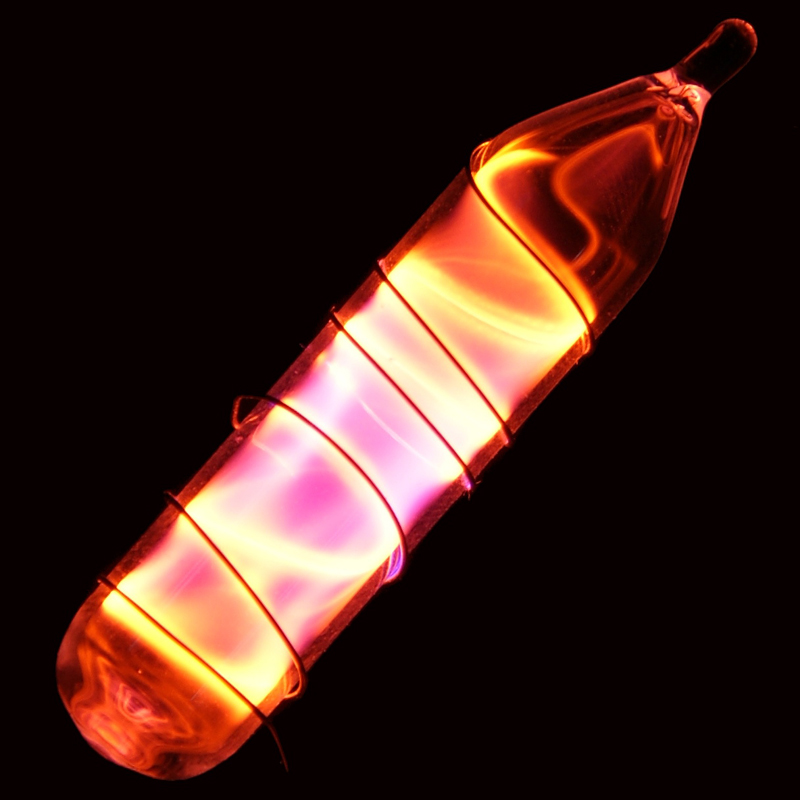氖
10
Ne
族
18
週期
2
區
p
個質子
電子
個中子
10
10
10
一般屬性
原子序數
10
標準原子質量
20.1797
品質編號
20
類別
惰性氣體
顏色
無色
放射性
否
希臘文“新的”
晶體結構
面居中立方
歷史
Neon was discovered in 1898 by the British chemists Sir William Ramsay and Morris W. Travers in London.
It was discovered when Ramsay chilled a sample of air until it became a liquid, then warmed the liquid and captured the gases as they boiled off.
After 1902, Georges Claude's company, Air Liquide, was producing industrial quantities of neon as a byproduct of his air liquefaction business.
It was discovered when Ramsay chilled a sample of air until it became a liquid, then warmed the liquid and captured the gases as they boiled off.
After 1902, Georges Claude's company, Air Liquide, was producing industrial quantities of neon as a byproduct of his air liquefaction business.
每個外殼的電子
2, 8
電子排布
[He] 2s2 2p6
In a vacuum discharge tube, neon glows reddish orange
物理性質
物態
氣體
密度
0.0008999 g/cm3
熔點
24.56 K | -248.59 °C | -415.46 °F
沸點
27.07 K | -246.08 °C | -410.94 °F
熔化熱
0.34 kJ/mol
汽化熱
1.75 kJ/mol
比熱容
1.03 J/g·K
地殼豐度
3×10-7%
宇宙豐度
0.13%

CAS 編號
7440-01-9
Pubchem CID 編號
23935
原子性質
原子半徑
38 pm
共價半徑
58 pm
電負性
-
電離電位
21.5645 eV
原子體積
16.7 cm3/mol
熱導率
0.000493 W/cm·K
氧化態
0
應用
Neon is often used in brightly lit advertising signs.
It is also used in vacuum tubes, high-voltage indicators, lightning arrestors, wave meter tubes, television tubes, and helium-neon lasers.
Liquid neon is used as a cryogenic refrigerant.
It is also used in vacuum tubes, high-voltage indicators, lightning arrestors, wave meter tubes, television tubes, and helium-neon lasers.
Liquid neon is used as a cryogenic refrigerant.
Neon is not known to be toxic
同位素
穩定同位素
20Ne, 21Ne, 22Ne不穩定同位素
16Ne, 17Ne, 18Ne, 19Ne, 23Ne, 24Ne, 25Ne, 26Ne, 27Ne, 28Ne, 29Ne, 30Ne, 31Ne, 32Ne, 33Ne, 34Ne